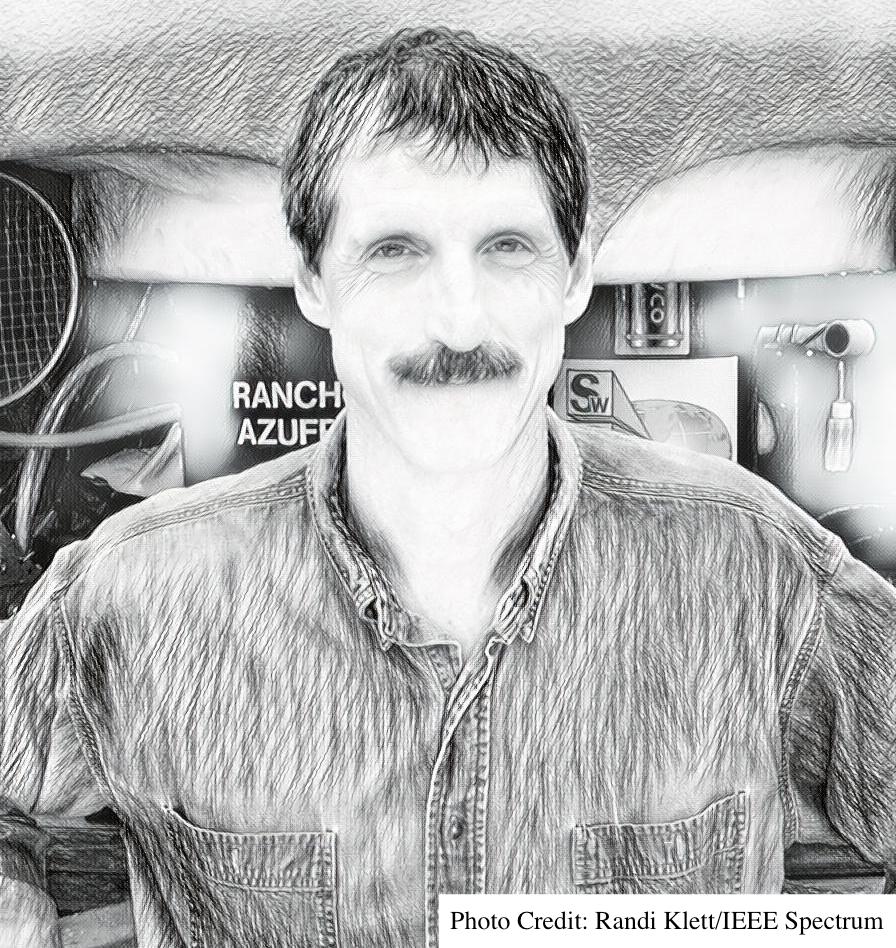William Stone
Adventurer-engineer William “Bill” C. Stone combines his passion for and experience with expeditionary caving and scientific exploration to create new high-tech data-gathering and survival systems. His numerous inventions are aimed at making it easier for humans to explore remote environments from deep underwater to outer space.
Stone was born in 1953 and grew up in Pennsylvania where as a high school student he attended a meeting for the formation of a spelunking club, even though at the time, he wasn’t too sure what spelunking was. (Spelunking is the sport of recreational caving.)
He became hooked on the activity and continued into his college years, when he attended Rensselaer Polytechnic Institute in Troy, New York. He completed a BS in Civil Engineering at RPI in 1974, followed by an MEng in Structural Engineering in 1975. In 1980, he completed his PhD in Structural Engineering at the University of Texas.
Stone became serious about cave exploration, embarking on dozens of challenging expeditions around the world and gaining a reputation as one of the world’s most accomplished and knowledgeable cavers. As his adventures took him to more and more remote places he began to develop and experiment with equipment and techniques that could help humans live and work longer in the deep, dark underground, including robotic and/or remotely operated vehicles.
He formed his own company, Texas-based Stone Aerospace, in 1980 to develop and commercialize systems for exploration and exploitation of challenging environments, from autonomous systems, mobile robotics, and WiFi controlled vehicles, to re-entry vehicles for space travel, spacesuit technology, three-dimensional mapping, and navigation systems. Meanwhile he also founded the U.S. Deep Caving team and co-authored a book, “Beyond the Deep: The Deadly Descent Into the World's Most Treacherous Cave,” detailing his journey into one of the earth’s deepest caves, the Sistema Huautla in Oaxaca, Mexico.
One of Stone’s more commercial inventions is for a novel rebreather dubbed the Cis-Lunar MK6. A rebreather is an underwater breathing system that recycles air inhaled from a tank and makes it available for the diver again; this apparatus makes it possible for humans to stay underwater longer and is commonly used in deep research and military dives. The MK6 is a recreational rebreather aimed at those new to diving so they can learn to use rebreathing techniques from the outset, allowing them to pursue deeper dives later more safely. The MK6 is the sixth iteration of a device Stone created in 1984, the MK1, which was the first machine of its kind equipped with twin, independent closed-cycle gas processing stacks to recycle exhaled air. It also had the ability to cross-route gas and consumables supplies while on a mission.
Stone has earned a dozen patents and has authored over 120 scientific papers. He serves as President and CEO of Stone Aerospace. Under his direction, Stone Aerospace built and deployed an autonomous robot, DepthX, down 1,099 feet into one of Mexico’s deepest sinkholes.


